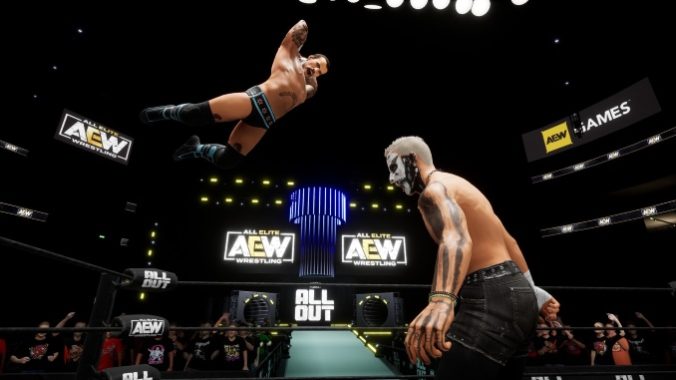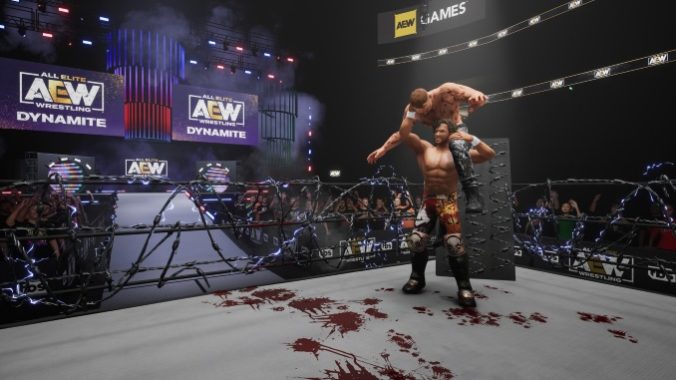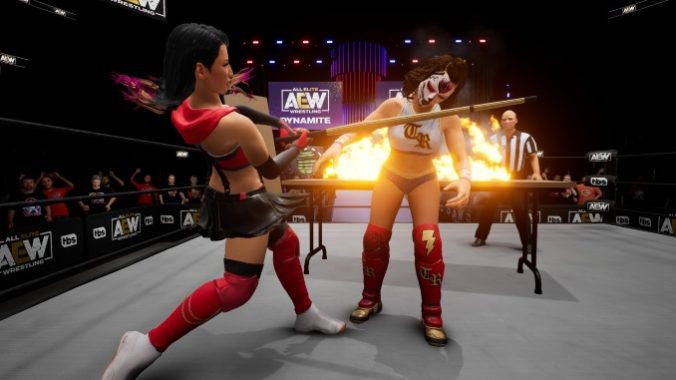AEW Fight Forever Nails the Fundamentals but Comes Up Short of Five Stars

When the upstart wrestling promotion AEW announced its first videogame in 2020, it promised one thing: a modern-day version of WWF No Mercy. At the most basic level Fight Forever delivers, to the point where I knew exactly how to play it my very first match without any training or tutorials. If all you’re looking for is a Nintendo 64-style AKI wrestling game that you can play on a current console, with online play and everything, then Fight Forever is a smashing success. It captures the dramatic, back-and-forth feel of a wrestling match the same way those classic games did, without the convoluted controls or unnecessary gimmicks found in other modern series. I’m sure I’ll pick up and play Fight Forever to get my wrestling fix for years to come, even if the game isn’t continually updated, instead of digging the old Nintendo 64 out of the closet. AEW Fight Forever is the No Mercy reboot wrestling fans have been hoping for for decades.
It also isn’t really any more than that, though—and in fact, actually offers less than No Mercy did on the Nintendo 64 back in 2000. It might be more accurate to compare Fight Forever to AKI’s earlier WCW games like WCW/nWo Revenge. Sure, AEW’s game has the kind of creation suite that was lacking in that classic, but No Mercy has a few crucial bells and whistles that can’t be found in Fight Forever, at least not yet. I wouldn’t call a game that’s so fundamentally enjoyable a disappointment, by any means, but Fight Forever still feels thinner than it should, and there’s enough that should be here that isn’t that the inevitable complaints shouldn’t be dismissed as nitpicking.
First, though, let’s focus on what Fight Forever gets right. As I’ve said, it nails the feel and flow of No Mercy, WrestleMania 2000, and the two AKI WCW games that took up near-permanent residence in my Nintendo 64 back in the late ‘90s and early ‘00s. A match on the normal mode is a nice little back-and-forth affair that feels like a solid scuffle on AEW’s B-show Rampage, and when you bump that difficulty up to hard you’ll usually wind up with a pay-per-view quality epic whose finish is almost never predictable. (Easy is always squash city, of course—something right out of the dearly departed AEW Dark.) You should wear your opponent down with weak and strong strikes before moving on to weak and strong grapples, with various high-impact moves to punish your rival when they’re bouncing off the ropes or slammed into the corner. The left joystick triggers one of four taunts, which will boost your Momentum meter and let you access Signature moves and Finishers; this is straight out of the classic AKI playbook. And since this is a game based on AEW, of course there’s a bounty of dives, splashes, and acrobatic moves off the top and middle ropes to pull off. It’s like No Mercy if most of the roster had a high-flying moveset similar to 2000-era cruiserweights Eddie Guerrero and Chris Jericho (who’s actually in Fight Forever in his modern megalomaniacal rock singer phase).
If you miss those halcyon days of beating up your friends on the Nintendo 64, Fight Forever will let you revisit them on the console of your choice. And if you’re all too busy to hang out on a couch in your 30s or 40s, you can relive those days through the game’s online offerings. There’s a number of exhibition matches to jump into, from standard one-on-one dust-ups to tag matches, multi-wrestler affairs, ladder matches, battle royales, and even an exploding barbed wire deathmatch. Again, Fight Forever fundamentally delivers on its promises.

That exploding barbed wire deathmatch is worth expounding on, because, uh, it’s pretty damned amazing. The actual match between Kenny Omega and Jon Moxley might’ve been an infamous fizzle when it main evented AEW Revolution 2021 (the bombs were a dud, although I think AEW did a solid job of explaining that failure in storyline). Fight Forever lets you run that match back with any two wrestlers on the roster, and fast forwards through most of it to get to the last two minutes before the bombs go off. Those two minutes are as bloody as wrestling games have ever gotten, with you and your opponent trying to throw and toss each other into the barbed wire that surrounds the entire ring, marking up the whole canvas with dark smears of blood. When the two minutes are up, and the explosions ripple throughout the arena, you’ll experience a spectacle rarely seen in wrestling videogames. Few things in gaming are as perversely exciting as Riho wrestling Riho in a ring surrounded by barbed wire and bombs, and you can make that the very first thing you do in Fight Forever.
Road to Elite, the game’s single-player story mode, probably won’t have the lifespan of the exhibition matches, but it is more replayable than it initially seems. It lasts for one in-game year, adapting storylines from the first 18 months or so of AEW’s history as you play through every week between the first and second Double or Nothing events. You can play it with AEW’s roster of real fighters or your own create-a-wrestlers, but since it’s the main way to beef up your original creations’ stats and unlock new moves and perks, you’ll probably want to stick to the latter.
Every Road to Elite story begins the same, with your wrestler fighting through the original Double or Nothing’s Casino Battle Royale in hopes of winning a spot in the very first AEW World title match. Depending on that outcome you’ll move on to one of three possible storylines for the first of four three-month pay-per-view cycles. There are three potential routes for each of these four blocks, and they all depend on how you perform during the previous one. If you lose your big PPV match at the end of a block, expect to move down the card and compete for lesser titles when the next PPV cycle begins. Every block is split into 12 weeks with four total actions per week, culminating in a weekly match on AEW Dynamite. When each week starts you can pick between various actions: you can work out, which will earn you points to level up while depleting your energy levels and potentially injuring you; you can go sight-seeing in whatever city Dynamite is in that week, which will boost your Motivation headed into each match while also leading to unexpected interactions with AEW wrestlers; you can attend a press conference or other public event, which will restore energy and Motivation; you can play minigames with the Young Bucks and Kenny Omega, which will earn you both money and power-up points if you come in first place, and ding your Motivation level if you lose; you can go get a meal, which will increase a large chunk of your energy while also educating you on the local cuisine; or you can wrestle a second weekly match on AEW Dark or Rampage, which will earn you additional money and skill points if you win, while also wearing you down before your more important Dynamite match. The goal is to go into Dynamite, the company’s main weekly show, with as much energy and Motivation as possible. You can also use the points you’ve earned to power up your wrestler or purchase new moves and skills, and spend money to purchase wrestlers, alternate costumes, taunts, body motions, and other create-a-wrestler options.
